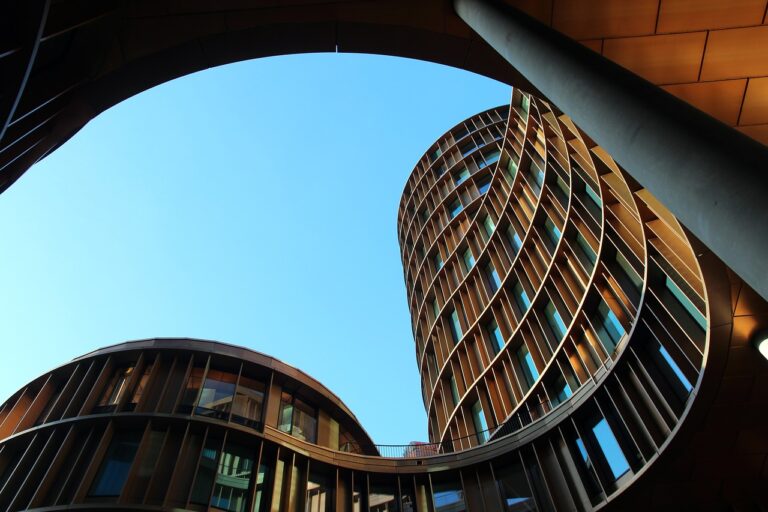As a discipline, architecture is always developing to meet the demands of a dynamic society. Innovative designs, environmental practices, and technological developments form today’s architectural landscape.
These new developments are not only improving the environment and the standard of living, but they are also altering the way we construct buildings. As architects, there’s always a lookout for innovative tools, materials, and techniques that can help us meet the challenges of contemporary life.
In addition to developments in technology, current architectural trends are a reaction to changes in the needs of society as a whole.
Table of Contents
The 6 emerging trends in architecture
In this article, we will look into six future emerging trends in architecture that are reshaping the industry.
1. Adaptive reuse
Utilizing existing structures in a sustainable manner is also important. Rather than taking down older buildings and starting from scratch, adaptive reuse advocates for renovating and finding new purposes for them.
Not only is adaptive reuse on-trend, but it also reduces energy consumption and wastes. Furthermore, it aids in connecting the past with the present and future by ensuring places of cultural significance and unique buildings are maintained and receive the attention they deserve.
Architects are getting inventive by transforming abandoned warehouses, factories, and other historic structures into recreational facilities, live/work places. This movement represents the idea that an existing structure is inherently more eco-friendly than a new one.
2. Modular and prefabricated construction
As more people learn about the benefits of modular and prefabricated construction over conventional methods, their use is on the rise.
Modular construction entails producing building parts in a factory and then putting them together at the construction site. By using this technique, builders can save money, time, and material. It works wonderfully for homes, hotels, and even businesses.
Modular building allows for a wide range of architectural styles, from conventional cubes to futuristic glass towers. Due to increased material and waste management efficiency, prefabrication is also in line with the environmental trend.
3. Building information modelling (BIM)
BIM, or Building Information Modeling, is changing the face of architecture. It allows the Architect to produce a complete 3D model that takes into account all parts of the design and construction process by digitally representing the physical and functional attributes of a structure.
BIM improves communication amongst all parties involved in a project, including clients, architects, and engineers. It improves the quality of decisions made throughout a project’s lifecycle, streamlines design and construction, and decreases the number of mistakes made.
By simulating various conditions, BIM allows architects to fine-tune their designs for maximum efficiency, sustainability, and economy.
4. Biophilic design
The goal of the biophilic design movement is to help people feel more at one with their surroundings by incorporating natural features into buildings. BSBG’s biophilic design for SHA Emirates, which prioritizes bringing nature indoors through the incorporation of plants and other natural materials/elements, is an approach to interior design that has maintained its popularity in recent years.
This movement acknowledges the critical role that natural environments play in human health and well-being. For this reason, biophilic design is expanding our understanding of how natural systems can be embedded in the built environment of our cities to serve multiple social, economic, and environmental purposes.
These days, architects are taking health and well-being into account when designing buildings and public spaces by including elements like indoor gardens, ample windows, and eco-friendly materials. With this approach, architects are able to create a layout that brings people closer to nature and promotes relaxation.
5. Sustainable architecture
The practice of building in a sustainable manner is no longer optional. Sustainable design is gaining popularity in the architectural world as a means to combat climate change and lessen our impact on the planet.
Green materials, renewable energy, and energy-efficient design are all things architects are starting to prioritize. Sustainable architecture has mainstreamed ideas like green roofs, passive design, and LEED certification.
The objective is to build structures that not only help save the planet’s resources but also improve its overall condition.
6. Big data
Big data’s arrival has changed the building industry drastically. Data on user behavior, building performance, and environmental variables are now readily available to architects. Architects can improve their design decisions with this information.
By considering variables such as weather, occupancy, and energy use, big data technology can improve a building’s energy performance. It can also aid architects in gaining insight into how users interact with places, resulting in more personalized layouts.
Moreover, data-driven design allows for the anticipation of maintenance requirements, which further contributes to a building’s long-term sustainability.
An integrative strategy for the future of architecture designs
These six new emerging trends in architecture have the potential to significantly alter the field in the years ahead. They are the ones pushing architecture into a more sustainable, user-friendly, and cutting-edge future.
By incorporating these movements, architects are doing more than just designing visually appealing buildings; they are also responding to urgent societal needs by improving the usability, accessibility, and sustainability of the built environment. These tendencies rarely exist in isolation, pointing to an integrative strategy for the future of architectural design.
Read also: Stockholm Wood City: from Sweden the world’s largest wooden neighborhood












